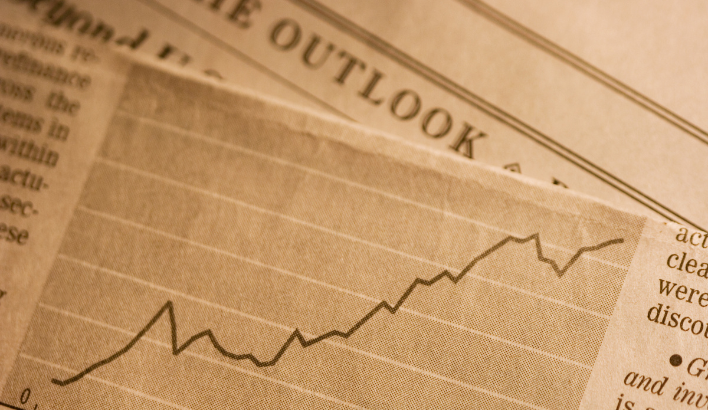Market Outlook 2023 From Top Banks: 15 Things To Look For In The New Year


Looking back at 2022, it has been a year filled with turbulent geopolitical and economical events. From the year-long Russia-Ukraine war to the US balancing on a thin-recession line, no economy was spared from the chaos.
Here to shed some light on an otherwise foggy economic future, regarding some hotly discussed topics.
#1 Global Recession
With many global central banks restricting monetary policies in 2022, the fear of recession continues to grow into the new year.
“US Likely to avoid recession. The advance GDP report showed 2.6% (annualized) growth in Q3, nonfarm payrolls grew 261k in October, and there were 225k initial jobless claims in the week of November 5. More fundamentally, there are strong reasons to expect positive growth in coming quarters.” – Goldman Sachs [2]
“The probability of recession in the US, UK, and the EU over the next year is already above 50%.” – Apollo Global Management [3]
#2 Labour Market Health
Labour market health varies between each major economy with some still maintaining healthy levels, while others experience increasing unemployment rates.
“Given that demographics are less favourable in Europe than in the US, labor hoarding could be more accentuated in Europe. That suggests wage growth may also not slow as much.” – ING Economics [4]
“The labor markets remain resilient in the US but labor market rebalancing is likely to be slower in Europe, and risks of a wage-price spiral are higher.”- Morgan Stanley [5]
#3 Global Inflation
The main headline of high inflation in 2022 carries on into the new year with consumer price index in major economies resting high above the central bank’s expectations.
“Signs of slowing activity in the west, and a return to full production in China, should ease inflation through the course of 2023, with the shrinking contributions from energy and goods sectors in particular helping price pressures to moderate in the months ahead.” – J.P. Morgan [6]
“Inflation will likely fall slowly, with consumer prices worldwide rising at a 4.6% average next year.” – Barclays [7]
#4 US Interest Rates
With Fed Chairman Jerome Powell maintaining interest rate hikes at 50 bps, and the soft landing narrative staying true, interest rates hikes in the US may slow down during the first half of 2023.
“Although we expect the pace of tightening to peak by end-2022, we do not forecast any developed market central bank to cut interest rates in 2023, as they are focused on actual rather than expected inflation.” – Credit Suisse [8]
“Assuming headline inflation and wage inflation are easing, we see US interest rates rising to around 4.5%- 5.0% in the first quarter of 2023 and stopping there.” – J.P. Morgan [6]
#5 Fed Policy
Expectations of a Fed pivot in monetary policy is delayed into 2023 as inflation figures within the US remain three-times higher than healthy levels.
“Even as the US Federal Reserve continues to raise rates, valuations should not necessarily decline further. Additionally, growth will again become scarce, likely leading investors to gravitate back towards quality growth.” – BNP Paribas [9]
“A Fed pivot toward interest-rate cuts, which we expect in the second half of 2023 as inflation slows noticeably, will undercut a major support for the dollar.” – Wells Fargo [1]
#6 Russia-Ukraine War
The ongoing Russia-Ukraine conflict continues to send ripple effects on other major economies. It is remains unclear when the war will be resolved, though hopes remain high as nations come together to assist Ukraine.
“Efforts by the European Union and U.S. to exclude Russian oil from the market will add to pressures too. While gas prices have decreased recently, they remain well above what they were before the Russia-Ukraine war erupted.” – Deutsche Bank [10]
“Alongside the continued tragic human cost of the Russia-Ukraine war, energy security will remain top of the agenda for Europe and the UK, which could be a significant driver of capital in the future.” – Fidelity International [11]
#7 China’s Economy
As China’s economy attempts to balance a strict zero-Covid policy with the exponentially growing number of internal Covid cases, the re-opening of China’s economy looks to be murky.
“China’s recent pivot towards gradual relaxation of the Zero COVID policy and more comprehensive policy support for the property sector are notable drivers to support its gradual growth recovery in 2023.” – HSBC [12]
“China looks set to de-emphasize economic growth as it pursues self-sufficiency in energy, food and technology. We see slower growth compounded by the effects of an aging population over time.” – BlackRock Capital [13]
#8 Europe’s Economy
With the Eurozone still struggling with high inflation due to the Russia-Ukraine conflict and the ECB aggressively raising rates, the outlook for the Eurozone looks bleak.
“The Euro area is probably in recession. The reason for this is the much bigger and more drawn-out increase in household energy bills, which should boost headline inflation to peaks of 12% in the Euro area and 11% in the UK, far higher than in the US.” – Goldman Sachs [2]
“The implication for markets is that the Fed and the European Central Bank (ECB) may not need to do much additional “demand destruction” to get inflation down. In that scenario, central banks will not be under so much pressure to keep rates high for an extended period.” – Apollo Global Management Inc [3]
#9 UK’s Economy
UK’s energy sector has also been heavily impacted by the Russia-Ukraine war. Coupled with political failures and the BoE maintaining a firm hawkish stance, the UK’s economic recovery may take a long time.
“Elevated mortgage rates and less generous energy support triggers multi-quarter recession.” – ING Economics [4]
“We are underweight. We find valuations expensive after the strong relative performance versus other DM markets thanks to energy sector exposure.” – BlackRock Capital [13]
#10 Japan’s Economy
With BoJ Governor Kuroda considering a switch in Japan’s decade long monetary policy, the future path of the Japanese Yen could change abruptly.
“Japan should benefit from its delayed and still-ongoing Covid-19 recovery as well as accommodative fiscal and monetary policy. Similar in some ways to Germany, the country’s cyclical structure is highly dependent on China, which could provide a tailwind in 2023 and make Japanese equities a useful tool for diversification.” – Deutsche Bank [10]
“As the Fed will likely pivot to a less hawkish stance sometime in 2023, we think this combination would mark an end to the sharp JPY depreciation and a potential significant reversal of our estimated 40% undervaluation in JPY vis à vis the USD.” – Credit Suisse [8]
#11 Housing Market
The housing market took a hit when the Fed started their aggressive rate hike cycle. As long as the Fed continue to raise rates, the housing market could continue to face downward pressure.
“The coming year is likely to be a challenging one for real estate but should also create opportunities to lock in higher yields and generate long-term value.” – Fidelity International [11]
“While goods prices have declined, and the housing market’s sharp downturn should soon be reflected in inflation through lower shelter costs, a strong labor market continues to add to inflationary pressures.” – BNY Mellon [14]
#12 Dollar Outlook
With rising interest rates, the dollar continues to find support and create new highs. The Fed continuation of rate hikes could have the potential to bring more strength to the dollar.
“Fed tightening may continue in early 2023, during which time the US dollar may remain supported. But when US economic data turn weaker and the Fed pivots to cutting, the dollar may see substantial downside.” – Citibank [15]
“Cash should be the real winner of 2023, with US front-end yields likely to go to 4.5% or higher and stay there for several quarters.” – Barclays [7]
#13 Stock Market Outlook

In an environment of weak monetary flow, the equity markets within the US have been on a steady decline. Expectations of further bearish movements may extend into the early quarter of 2023.
“Our equity allocation favors the U.S. relative to other markets, with a preference for large cap stocks. There has been a regime change within equities, with companies that outperformed in the era of ultra-low rates and ample liquidity expected to underperform in an environment of higher borrowing costs and lingering inflation.” – BNY Mellon [14]
“Still, US equities remain our main overweight globally as we believe the US may avert outright recession.” – HSBC [12]
#14 Commodity Market Outlook
Precious metals such as gold and silver may face more downward pressures going into 2023 as demand continues to decline, with safe havens failing to serve as an inflation hedge.
“Having been the top performing asset class in 2022, Commodities are not expected to do so well over the next ten years.” – Citibank [15]
“Broad commodities remain a relevant hedge against particularly severe inflationary episodes.” – HSBC [12]
#15 Emerging Markets Outlook
With the US dollar potentially rising more in value in 2023, other major and minor economies may find it difficult to pay back debt to the US, possibly forcing some of these nations to conduct quantitative easing.
“If the dollar does peak against developed market currencies in 2023, as we expect, with the euro and yen finally finding some support, emerging market currencies may also stabilize as the pressure of a globally strong dollar eases.” – Wells Fargo [1]
“Due to the sharp drop in share prices, equity valuations have fallen across the board. As a result, emerging market equities now look increasingly attractive from a valuation perspective.” – J.P. Morgan [6]
Conclusion
Although the overall outlook for 2023 may not seem favourable in every aspects, there are still ways to maintain a green portfolio. As Sun Tze said, “In the midst of chaos, there is also opportunity”.
Look to capitalise on the markets in 2023? Sign up with a live account here and start trading.
References
- Investment strategy report – Wells Fargo. 2023 Outlook Recession Recovery Rebound. (2022). Retrieved December 30, 2022, from https://www08.wellsfargomedia.com/assets/pdf/personal/investing/investment-institute/investment-strategy-report_ADA.pdf
- Macro outlook 2023: This cycle is different. Goldman Sachs – Macro Outlook 2023: This Cycle Is Different. (2022, November 17). Retrieved December 30, 2022, from https://www.goldmansachs.com/insights/pages/macro-outlook-2023-this-cycle-is-different.html
- 2023 Economic and Capital Markets Outlook. Apollo Global Management. (2022). Retrieved December 30, 2022, from https://www.apollo.com/media
- Ing. (2022, December 27). ING Global Economic Outlook 2023. ING Think. Retrieved December 30, 2022, from https://think.ing.com/reports/
- 2023 Investment Outlook. Morgan Stanley. (2022, December 12). Retrieved December 30, 2022, from https://www.morganstanley.com/
- Investment Outlook 2023. J.P. Morgan. (2022, November). Retrieved December 30, 2022, from https://am.jpmorgan.com/content/dam/jpm-am-aem/global/en/insights/market-insights/MI_Mid-Year_Outlook_2022.pdf
- Q1 2023 global outlook: Barclays Corporate & Investment Bank. Q1 2023 Global Outlook | Barclays Corporate & Investment Bank. (2022, December). Retrieved December 30, 2022, from https://www.cib.barclays/our-insights/3-point-perspective/q1-2023-global-outlook.html#:~:text=2023%20may%20well%20be%20one,3.2%25%20growth%20expected%20for%202022
- Auchenberg, ? K. (2022, December 29). Investment Outlook 2023 – A Fundamental Reset. Credit Sussie. Retrieved December 30, 2022, from https://data.stagingmag.nl/2763/issues/39432/494150/downloads/2209270_cs_io_2023_en_rgb_digital.pdf
- Am, B. (2022, December). Investing In An Age Of Transformation. BNPP Asset Management. Retrieved December 30, 2022, from https://docfinder.bnpparibas-am.com/api/files/37CB6B30-A48A-45F6-B2E4-CCC5927F434C
- CIO Insights. Wealth Management Services | Deutsche Bank Wealth Management. (2022, December). Retrieved December 30, 2022, from https://www.deutschewealth.com/content/dam/deutschewealth/cio-perspectives/cio-insights-assets/q1-2023/CIO-Insights-Outlook-2023-Resilience-versus-recession.pdf
- Navigating The Polycrisis. Fidelity International. (n.d.). Retrieved December 30, 2022, from https://professionals.fidelity.co.uk/perspectives/outlook-2023
- Looking For The Silver Lining. HSBC. (n.d.). Retrieved December 30, 2022, from https://www.privatebanking.hsbc.com/content/dam/privatebanking/gpb/wealth-insights/investment-insights/house-views/2021/brochures/Q4%202021%20Investment%20Outlook_Slow(er)%20and%20steady%20wins%20the%20race.pdf
- 2023 Global Outlook. BlackRock. (2022, December). Retrieved December 30, 2022, from https://www.blackrock.com/corporate/literature/whitepaper/bii-global-outlook-2023.pdf
- 2023 Outlook Looking Through To Recovery. BNY Mellon. (n.d.). Retrieved December 30, 2022, from https://www.bnymellonwealth.com/content/dam/bnymellonwealth/pdf-library/articles/Final_BNYM2023OutlookMaster12_20_22.pdf
- Wealth Outlook 2023 Roadmap To Recovery : Portfolios To Anticipate Opportunities. Global economic outlook 2023 | Citi Private Bank. (n.d.). Retrieved December 30, 2022, from https://www.privatebank.citibank.com/newcpb-media/media/documents/outlook/outlookwealthreport2023.pdf
The information has been prepared as of the date published and is subject to change thereafter. The information is provided for educational purposes only and doesn't take into account your personal objectives, financial circumstances, or needs. It does not constitute investment advice. We encourage you to seek independent advice if necessary. The information has not been prepared in accordance with legal requirements designed to promote the independence of investment research. No representation or warranty is given as to the accuracy or completeness of any information contained within. This material may contain historical or past performance figures and should not be relied on. Furthermore estimates, forward-looking statements, and forecasts cannot be guaranteed. The information on this site and the products and services offered are not intended for distribution to any person in any country or jurisdiction where such distribution or use would be contrary to local law or regulation.
